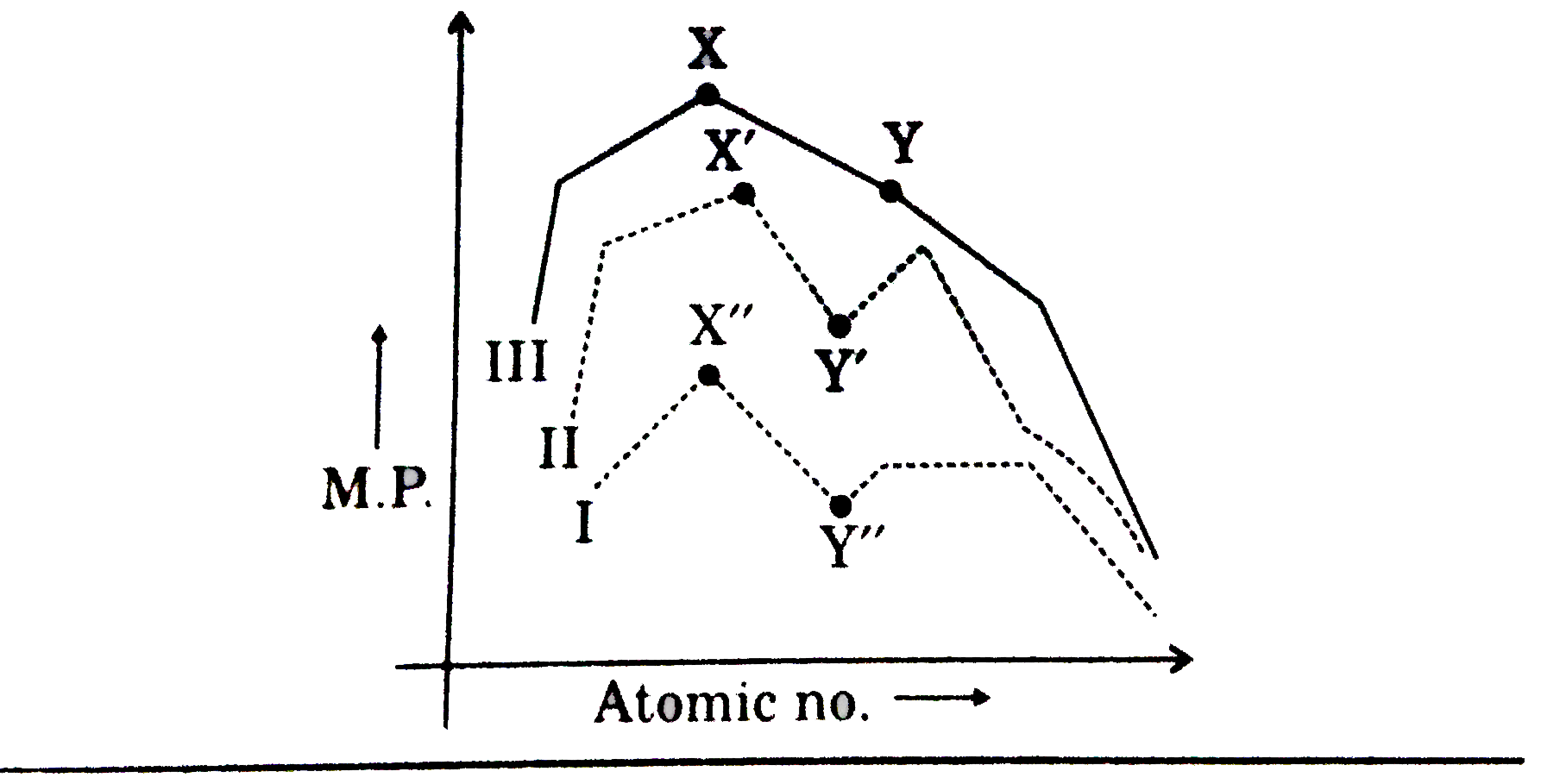
Refer to the graph for trends in M.P. of transition elements of 3d,4d and 5d series.
Q. A metal having high boiling point:
has high enthalpy of atomization
tends to be noble in their reactions
has strong metallic bonding
all of the above.
The correct Answer is:D
Topper's Solved these Questions
- D-BLOCK ELEMENTSBOOK - GRB PUBLICATIONCHAPTER - D-BLOCK ELEMENTSEXERCISE - Match the column type
6 Videos
- D-BLOCK ELEMENTSBOOK - GRB PUBLICATIONCHAPTER - D-BLOCK ELEMENTSEXERCISE - Subjective Type
18 Videos
- D-BLOCK ELEMENTSBOOK - GRB PUBLICATIONCHAPTER - D-BLOCK ELEMENTSEXERCISE - Multiple objective type
38 Videos
- COORDINATION COMPOUNDSBOOK - GRB PUBLICATIONCHAPTER - COORDINATION COMPOUNDSEXERCISE - SBJECTIVE TYPE
98 Videos
- ELECTROCHEMISTYBOOK - GRB PUBLICATIONCHAPTER - ELECTROCHEMISTYEXERCISE - Subjective type
39 Videos
Similar Questions
Give similarities and differences in the elements of 3d,4d and 5d series.
View SolutionRead the given passage and answer the questions number 1 to 5 that follow :
The d-block of the periodic table contains the elements of the groups 3 - 12 and are known as transition elements. In general, the electronic configuration of these elements is (n - 1) d1−10ns1−2. The d-orbitals of the penultimate energy level in their atoms receive electrons giving rise to the three rows of the transition metals i.e., 3d, 4d and 5d series. However, Zn Cd and Hg are not regarded as transition elements. Transition elements exhibit certain characteristic properties like variable oxidation states, complex formation, formation of coloured ions and alloys, catalytic activity, etc. Transition metals are hard (except Zn, Cd and Hg) and have a high melting point.
Which transition metal of 3d series does not show variable oxidation states ?
View Solution
Knowledge Check

Refer to the graph for trends in M.P. of transition elements of 3d,4d and 5d series.
Q. What does maxima at point 'X' indicate?AOne unpaired electron per d-orbital is particularly favourable for strong inteeratomic interaction.BStrong metallic bonding.CBoth a and bDNone of the above.
Refer to the graph for trends in M.P. of transition elements of 3d,4d and 5d series.
Q. Choose the correct statement(s).AIII refers to 3rd transition series of periodic table.BX corresponds to tungstenCY" corresponds to manganese.Dall of the above.
Read the given passage and answer the questions number 1 to 5 that follow :
The d-block of the periodic table contains the elements of the groups 3 - 12 and are known as transition elements. In general, the electronic configuration of these elements is (n - 1) d1−10ns1−2. The d-orbitals of the penultimate energy level in their atoms receive electrons giving rise to the three rows of the transition metals i.e., 3d, 4d and 5d series. However, Zn Cd and Hg are not regarded as transition elements. Transition elements exhibit certain characteristic properties like variable oxidation states, complex formation, formation of coloured ions and alloys, catalytic activity, etc. Transition metals are hard (except Zn, Cd and Hg) and have a high melting point.
Why are melting points of transition metals high ?
View SolutionRead the given passage and answer the questions number 1 to 5 that follow :
The d-block of the periodic table contains the elements of the groups 3 - 12 and are known as transition elements. In general, the electronic configuration of these elements is (n - 1) d1−10ns1−2. The d-orbitals of the penultimate energy level in their atoms receive electrons giving rise to the three rows of the transition metals i.e., 3d, 4d and 5d series. However, Zn Cd and Hg are not regarded as transition elements. Transition elements exhibit certain characteristic properties like variable oxidation states, complex formation, formation of coloured ions and alloys, catalytic activity, etc. Transition metals are hard (except Zn, Cd and Hg) and have a high melting point.
Why do transition metals and their compounds show catalytic activity ?
View SolutionRead the given passage and answer the questions number 1 to 5 that follow :
The d-block of the periodic table contains the elements of the groups 3 - 12 and are known as transition elements. In general, the electronic configuration of these elements is (n - 1) d1−10ns1−2. The d-orbitals of the penultimate energy level in their atoms receive electrons giving rise to the three rows of the transition metals i.e., 3d, 4d and 5d series. However, Zn Cd and Hg are not regarded as transition elements. Transition elements exhibit certain characteristic properties like variable oxidation states, complex formation, formation of coloured ions and alloys, catalytic activity, etc. Transition metals are hard (except Zn, Cd and Hg) and have a high melting point.
Why are Zn, Cd and Hg non-transition elements ?
View SolutionRead the given passage and answer the questions number 1 to 5 that follow :
The d-block of the periodic table contains the elements of the groups 3 - 12 and are known as transition elements. In general, the electronic configuration of these elements is (n - 1) d1−10ns1−2. The d-orbitals of the penultimate energy level in their atoms receive electrons giving rise to the three rows of the transition metals i.e., 3d, 4d and 5d series. However, Zn Cd and Hg are not regarded as transition elements. Transition elements exhibit certain characteristic properties like variable oxidation states, complex formation, formation of coloured ions and alloys, catalytic activity, etc. Transition metals are hard (except Zn, Cd and Hg) and have a high melting point.
Why is Cu2+ ion coloured while Zn2+ ion is colourless in aqueous solution ?
View Solution3d−,4d− and 5d− series consists of 10 elements each? Explain.
View Solution3d−,4d− and 5d− series consists of 10 elements each? Explain.
View Solution
